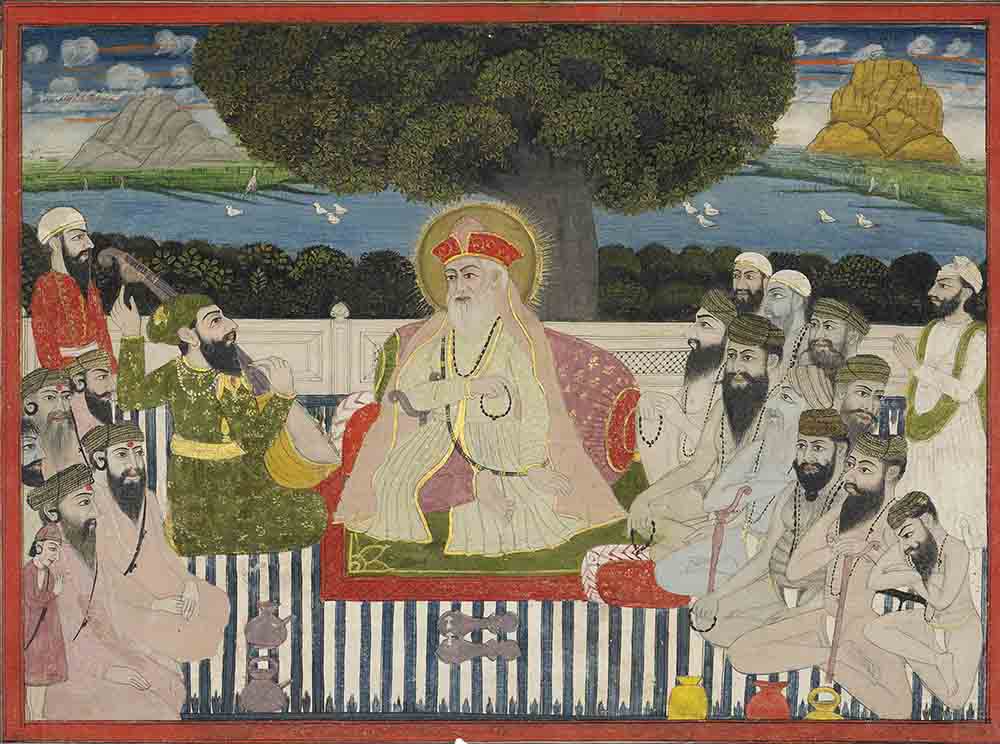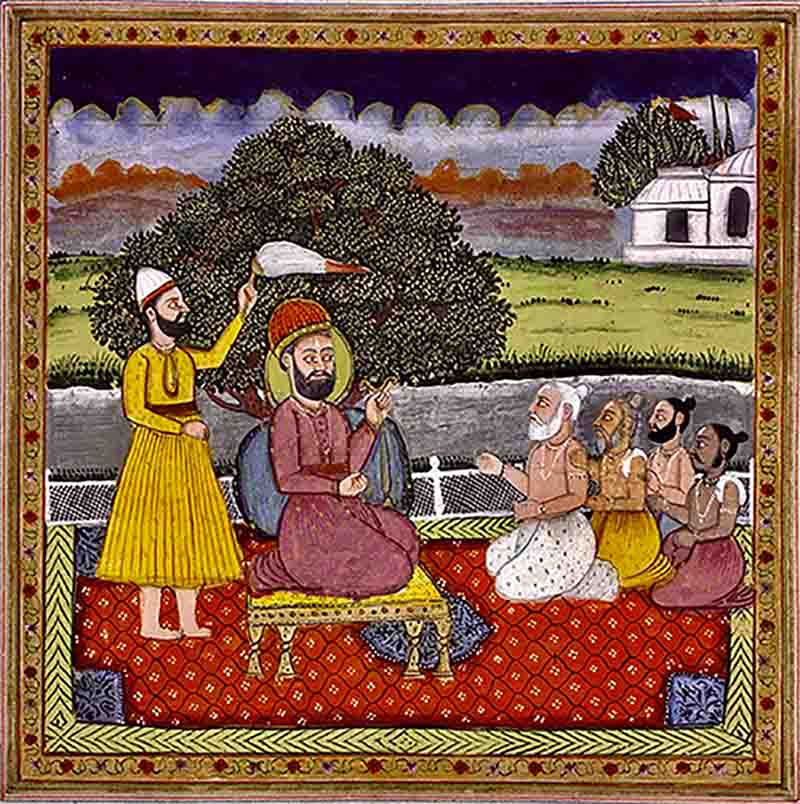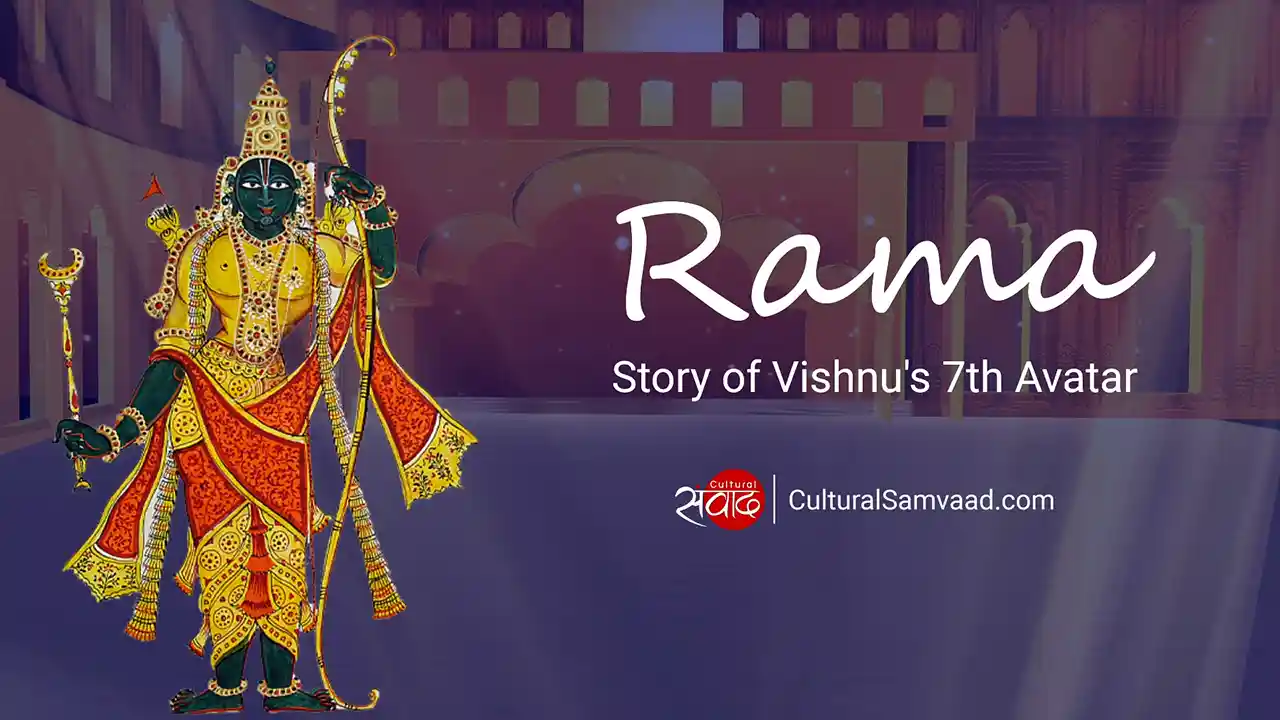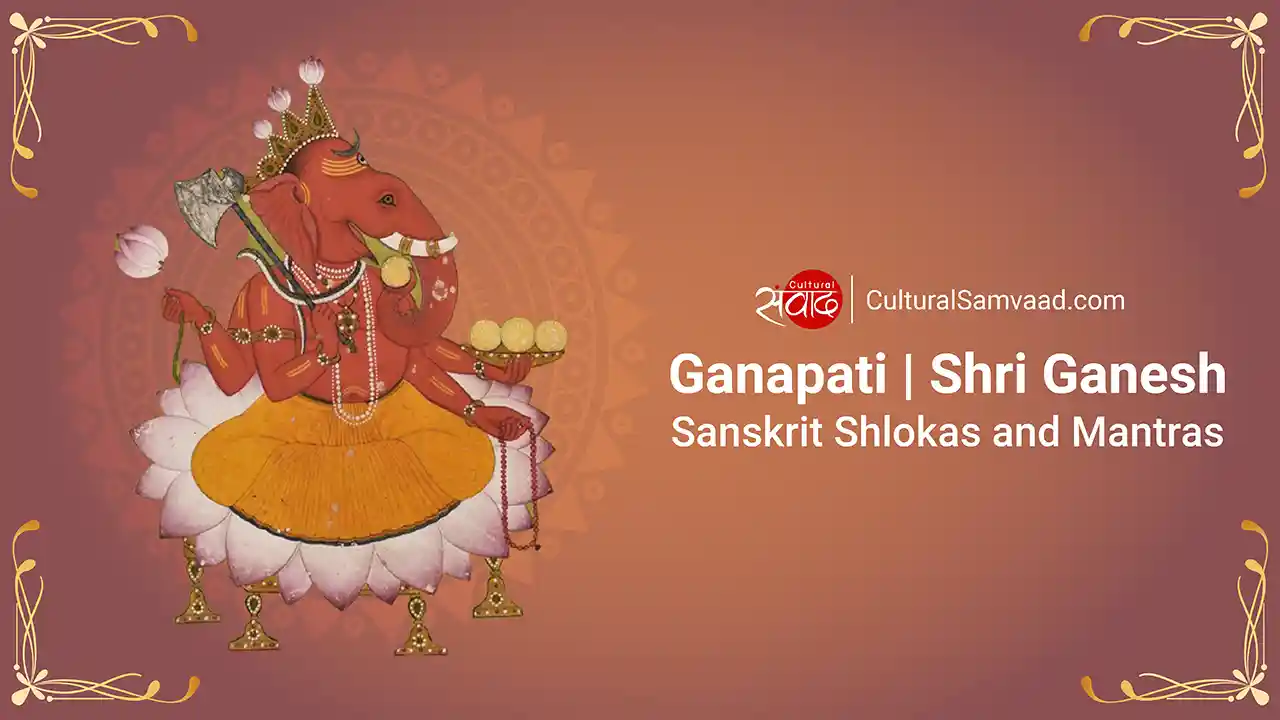Join Cultural Samvaad’s WhatsApp Community
Guru Nanak Devji, the first Sikh Guru and a mystic, reformer, saint, a bhakta and a consummate poet has made untold contribution to Indian thought, society and spirituality through his bani (वाणी) or words that have been preserved for posterity in the Guru Granth Sahibji. The Guru Granth Sahib contains 974 of his devotional hymns in 19 ragas (Japuji or Japji Sahib is an exception as it not set to a raga). The Guru’s bani is replete with meaning and not only elaborates upon major spiritual and ethical issues but also discusses social and mundane worldly concerns.

Short Introduction to the Basic Teachings of Guru Nanak
It is our attempt at Cultural Samvaad to present some of his teachings for the lay reader with minimal comments and context (except where necessary) so that they can be reflected and acted upon. We will try to arrange the selections of the bani under broad categories, but it is important to state that they do not capture the entirety of Guru Nanak Devji’s ruminations on the subject under discussion. This selection has hymns that discuss the true nature of a yogi and the translations are not verbatim but attempt to bring out the essence of the bani. Please feel free to comment or write to us at editor@culturalsamvaad.com if you would like to suggest changes.
Guru Nanak Devji – Raag Gauri – Ashtpadiyan – Guru Granth Sahib ji – Ang 223 (Page 223)
गउड़ी महला १ ॥
अधिआतम करम करे ता साचा ॥ मुकति भेदु किआ जाणै काचा ॥१॥
One is true and pure only when one leads a spiritual life. And if one is not true, how can one know the true secrets of liberation.
Note: The word अध्यात्म (adhyatma) is used in many contexts and does not have an exact English equivalent. In this note, it is used in the sense of spiritual.
ऐसा जोगी जुगति बीचारै ॥ पंच मारि साचु उरि धारै ॥१॥ रहाउ ॥
Only the yogi, who has subdued the five evils and enshrines the Lord (cherishes the truth) in her/his heart can contemplate on the way that leads to union with the Lord (Satguru).
Note: Satguru or the True Guru is Truth itself. In this note like in many other places, Satguru, Ek Onkar, Ik Onkar are all used to refer to the One God or Akaal Purakh (following the Mool Mantar).
The five evils or thieves (panj vikaar or chor) are kaam (lust), krodha (anger), lobha (greed), moha (attachment) and ahankaar (ego or pride).
In Patanjali’s Asthanga Yoga, the first limb is Yama (यम) which prescribes the basic rules of ethical conduct that should be practiced at all times. The yamas are abstaining from harming others, from falsehood, from theft, from moral infidelity, and from greed.
जिस कै अंतरि साचु वसावै ॥ जोग जुगति की कीमति पावै ॥२॥
Only such yogis realise the value of yoga and union with the Lord, who enshrine the Lord (Satguru) in the innermost recesses of the heart.
रवि ससि एको ग्रिह उदिआनै ॥ करणी कीरति करम समानै ॥३॥
For a true yogi, the heat of the sun and the coolness of the moon are alike and so are the comfort of home and wilderness of the forest. For her/him the performance of karma (action) and kirtan (devotion or bhakti) have the same importance.
एक सबद इक भिखिआ मागै ॥ गिआनु धिआनु जुगति सचु जागै ॥४॥
A true yogi chants the name of the One God (Ek Onkar) and only begs for (the realisation) of the name of the One God. She/he remain awake and aware (absorbed) in gyaan (spiritual knowledge and wisdom), dhyaan (meditation), union with the Lord and the truth.
भै रचि रहै न बाहरि जाइ ॥ कीमति कउण रहै लिव लाइ ॥५॥
A true yogi is always absorbed in fear of the one God and does not stray. Who can evaluate the value of the depth of her/his loving absorption in the Ek Onkar.
आपे मेले भरमु चुकाए ॥ गुर परसादि परम पदु पाए ॥६॥
Satguru dispels the doubts and illusions of such true yogis and they unite with the one God and attain the supreme state.
Note: One of the earliest references to the ‘param pada’ (परम पद) is found in the Rig Veda. तद्विष्णोः परमं पदं सदा पश्यन्ति सूरयः। दिवीव चक्षुराततम्॥ (RV I.22.20) The wise ever contemplate that supreme station of Vishnu (Paramam padam, supreme degree or station), as the eye ranges over the sky.
The supreme state in yoga (the last limb) is samadhi when the object of meditation, the subject of meditation and the yogi all fuse into one.
गुर की सेवा सबदु वीचारु ॥ हउमै मारे करणी सारु ॥७॥
Such yogis serve the Satguru, contemplate upon the Shabad (the divine word) and subdue their egos. They perform pure and auspicious karma.
जप तप संजम पाठ पुराणु ॥ कहु नानक अपर्मपर मानु ॥८॥६॥
Nanak says that true faith and surrender to the Ek Onkar to transcend worldly knowledge, lies in the chanting, meditating, practising austerity and self-discipline and the reading of the Puranas (sacred books).
Stories of Guru Nanak’s Life – Selected Janamsakhis of Guru Nanak

Guru Nanak Devji – Raag Suhi – Guru Granth Sahibji – Ang 730 (Page 730)
जोगु न खिंथा जोगु न डंडै जोगु न भसम चड़ाईऐ ॥ जोगु न मुंदी मूंडि मुडाइऐ जोगु न सिंङी वाईऐ ॥ अंजन माहि निरंजनि रहीऐ जोग जुगति इव पाईऐ ॥१॥
Yoga is not wearing of a patched quilt. Yoga is not the carrying of a staff. Yoga is not smearing the body with ashes. Yoga is neither the wearing of earrings nor the shaving of the head. Yoga is not the blowing of the horn. The true way to master yoga (become a yogi) is to remain in maya (the impure world around us) but still not be affected by it (remain unblemished or pure in it).
गली जोगु न होई ॥ एक द्रिसटि करि समसरि जाणै जोगी कहीऐ सोई ॥१॥ रहाउ ॥
Yoga is not practised or attained only through speech. To become a true Yogi, one must look at one and all without any differentiation and regard them as equal (i.e. have an egalitarian approach)
जोगु न बाहरि मड़ी मसाणी जोगु न ताड़ी लाईऐ ॥ जोगु न देसि दिसंतरि भविऐ जोगु न तीरथि नाईऐ ॥ अंजन माहि निरंजनि रहीऐ जोग जुगति इव पाईऐ ॥२॥
Yoga is not practised by staying at cremation grounds. Yoga is not merely sitting in trances. Yoga is not practised by wandering through faraway lands. Yoga is not practised by merely bathing at sacred shrines and pilgrim spots (teertha). The true way to master yoga (become a yogi) is to remain in maya (the impure world around us) but still not be affected by it (remain unblemished or pure in it).
सतिगुरु भेटै ता सहसा तूटै धावतु वरजि रहाईऐ ॥ निझरु झरै सहज धुनि लागै घर ही परचा पाईऐ ॥ अंजन माहि निरंजनि रहीऐ जोग जुगति इव पाईऐ ॥३॥
When one meets Satguru (the True Guru), all doubts are dispelled and the wandering and vacillating mind is stilled. When one is awakened from within and becomes wise, the spring of nectar seems to rain down in one’s heart (the inner mind is awakened), one hears mesmerising celestial sounds (given a calm and serene mind) and one is absorbed in the self (the One God is found within). The true way to master yoga (become a yogi) is to remain in maya (the impure world around us) but still not be affected by it (remain unblemished or pure in it).
नानक जीवतिआ मरि रहीऐ ऐसा जोगु कमाईऐ ॥ वाजे बाझहु सिंङी वाजै तउ निरभउ पदु पाईऐ ॥ अंजन माहि निरंजनि रहीऐ जोग जुगति तउ पाईऐ ॥४॥१॥८॥
Nanak tells us to practice such yoga that one should die while living (the ego is annihilated). When the innermost recesses of the self can hear the divine sound of the horn without it being blown, one can attain the state of fearlessness. The true way to master yoga (become a yogi) is to remain in maya (the impure world around us) but still not be affected by it (remain unblemished or pure in it).
Note: In many translations of this famous hymn (including by Khushwant Singh), the word ‘religion’ has been substituted for ‘yoga’. We prefer the term yoga given the Indian context and also the context in which these hymns were probably composed. One should however note that Guru Nanak Devji is emphasising the superiority of the inner self and a human being’s character and behaviour over external observances which is applicable to both yoga and religion.
For me, the hymns above discourses are reminiscent not only of Patanjali’s Ashtanga Yoga but also seem to elaborate upon Karma Yoga and Bhakti Yoga as expounded in the Bhagavad Gita. Guru Nanak Devji’s true yogi is a classic स्थितप्रज्ञ (sthitaprajña or stithapragya) who has a steady mind, has withdrawn from all external attachments and defilements and has united with the divinity within. She/he is pure even in the midst of all impurities.

Note to the Reader: From times immemorial, the spiritually fertile land of India has been home to gurus, rishis, seers, saints, prophets, thinkers and reformers who have shown her people the true path to fulfil humankind’s eternal quest. Many of their teachings and words were not only relevant in the context and times in which they were uttered but continue to offer unlimited food for thought and action in contemporary contexts. These teachings and words need to be understood keeping in mind the background of samvaad or dialogue as the cornerstone of Bhartiya tradition that has nurtured a pluralistic and dynamic culture with unmissable continuity even in the face of apparent disagreement and discord among the learned and the wise. As the Vedas assert – ‘Ekam sat, vipra bahudha vadanti. There is only one truth but the learned refer to it in various ways.’
Select References:
- Https://www.dekho-ji.com/sggs-223#bani1txt
- https://www.dekho-ji.com/sggs-730
- Hymns of Guru Nanak. Translated by Khushwant Singh. UNESCO Collection of Representative Works: Indian Series. New Delhi: Orient Longmans, 1969.
- Shri Guru Nanak Dev (Life, Travels and Teachings). G.S. Chauhan, Dr. Meenakshi Rajan. 2012.






Add comment